It’s hard to believe a full two years have passed since we’ve done one of these, but trees around town keep getting more interesting, so it’s time once again to go tree-watching with LPL's arborist-turned-librarian, Jake Vail, and LPL's librarian-turned-tree-hugging-nincompoop, Dan Coleman. We've got five new trees this time along with some new arboreal book recommendations, so let's get climbing.
Tree #1
Persimmon, South Lawrence Trafficway Trail, just west of the Holiday Inn Express (south of the Regal Southwind Theater parking lot), map
Dan: The first time I met a persimmon, I thought it was just a tomato with a really sweet personality, but a little research reveals they're not even in the same family. Tomatoes are a nightshade (many of which are toxic to humans), and persimmons are Ebenaceae, the same family as ebony trees, which produce a wood so dense it sometimes sinks, and so dark it has become synonymous with the color black.
Persimmons bear bright orange fruit in the fall that is closer in nature to a giant berry than the fruit of the tomato plant. The trees are known for being dioecious, which means individuals are either male or female. However, as an expert from the Lady Bird Johnson Wildflower Center in Austin explains, that can change for the same individual persimmon tree from year to year. Jake, without invading this tree’s privacy too much, can you tell if it’s a male or female?
Jake: The first time I met a persimmon was in a book soon after moving here, where I read that we live at the western edge of its range. I met one in person on a winter walk at Clinton Lake a year or two later, shook down a fruit and ate it. Instant fan.
Some clarification: both they and tomatoes are berries. Ain't botany fun? Also, the persimmon we're discussing is native to North America. The larger, pale orange fruits you see at the store are native to Asia. An important difference is that our persimmons are terribly astringent until really ripe, usually after a cold snap or three. Beware.
The persimmon (Diospyros virginiana) has become one of my favorite trees. I keep discovering more about it, including the fact that its leaves are used in tea, good for you in many, many ways. Then there's its ability to change genders. How did I not know about this? Perhaps because the mechanism for -- ready?-- gynodioecy was discovered after my arborist years. I'm sure you're wondering: the key to a dioecious gender switch is bright light.
The tree pictured is a female (this year anyways); that lil round green thing is an immature fruit surrounded by its pentamerous calyx. When it matures the fruit will have several fairly large seeds, which germinate easily -- so much so that I've established a nice little persimmon grove just by spitting out seeds. But don't try this at home. Persimmons move like hyped-up Ents, spreading by their roots to take over your yard.
Dan: Speaking of trees sprouting from seeds, there's a great new novel for children about a pair of sycamore seeds in the Cretaceous era fighting to survive wind, fire, and the asteroid that wiped out the dinosaurs. Big Tree was written and illustrated by Brian Selznick, who won the Caldecott Medal a few years back for The Invention of Hugo Cabret. The story was created by Selznick at the request of Steven Spielberg, who asked him to write a screenplay about nature from nature's point of view. The film project didn't survive the pandemic. This book sprouted instead.
Tree #2
Kentucky coffeetree, Maple Grove Cemetery, just north of I-70 on N 2nd St. (U.S. 59 Highway). map
Dan: Maple Grove Cemetery is the kind of place I love. I’ve driven by it thousands of times and hardly noticed, but when I heard it was home to a huge Kentucky coffeetree and went to check it out early one morning, I found myself in a place so beautiful I couldn’t believe I had missed it all these years.
The tree is beautiful, too, but don’t let the name fool you. Lawrence won’t be replacing Colombia or Ethiopia any time soon as a grower of what most of us call coffee, which comes from a small tree that needs highly specific growing conditions not found here (think 60 inches of rain per year and no hard freezes, for starters). But some early settlers are said to have roasted and ground up the gray seedpods this tree produces in October and used them as a coffee substitute.
Perhaps this passes for coffee in Kentucky. We’ve seen what passes for basketball there, so go figure (zing!). I’m not planning to try it any time soon, considering the seed pods in their raw form are toxic. It is also said that wood pulp from this tree was used by Native Americans to treat insanity (possibly the Kentuckians who thought they were making a decent cup of coffee out of those seed pods). Jake, I don’t think you have any Kentucky roots, but have you ever tried such a dubious brew?
Jake: Another one new to me when I moved here, first encountered at Black Jack Battlefield. And no, Dan, I'm not interested in coffee substitutes, even if they grow right outside my door. But those seed pods do have an interesting story, which could be called Eating the Ghost Forest of Eastern Kansas.
Once upon a time, tropical ecologist Daniel Janzen pondered the weird fruit we call avocado. What jungle critter might eat such a thing? No answer came until he enlarged his time frame, and realized that the original avocadovores perished long ago. He was in a ghost forest, depleted of ground sloths and mastodons and all manner of big extinct critters. Author Connie Barlow suggests such ghost forests were right here, too, and the local megafauna munched on Kentucky coffeetree seed pods, as well as fruits of honey locusts, Osage oranges, and paw paws. In other words, as she put it, "Persimmons were not made for possums."
Like persimmons, Kentucky coffeetrees are dioecious. Here's a picture of the male flowers, seldom seen because they're often up at the top of the trees.
Another bit of botany: they have gigantic leaves! You might think that they don't look so big, but one must differentiate between leaf and leaflet. Kentucky coffee trees have twice-pinnately compound leaves that grow up to three feet long, each with dozens of leaflets.
Dan: Now you are really getting over my head with botanical terms. I had to look up what you meant by "twice-pinnately compound," and found a great guide here. All this talk of ancient fauna, leaves and leaflets affords me an opportunity to plug another new children's book, and, like a true Kansas hoops fan, bash Kentucky basketball some more. The book, We Are Branches, is Joyce Sidman and Beth Krommes' ode to the very concept of the branch in nature, and as with the spiral in Swirl by Swirl, they see it everywhere, in actual trees as well as the evolutionary tree of life. Amazingly, it shows up in college basketball, too, in the second and third winningest programs of all-time--Kentucky and North Carolina, respectively--both of which branched out from the mother tree of college hoops itself, rooted right here in Lawrence, where the two Kansas boys who later established those programs, Adolph Rupp and Dean Smith, played under KU coaching legend Phog Allen at the winningest program of all time. (Okay, yeah, that's a stretch for an article about trees, but we're a few months into the off-season and I haven't had many opportunities to talk trash lately).
Tree #3
Hackberry, Fitch Natural History Reservation, just north of the entrance gate, map
Dan: One afternoon a few years back when my kids were toddlers, we were killing time at Clinton Lake Overlook Park and stumbled onto one of the most amazing natural phenomena I’ve ever experienced. Thousands of butterflies surrounded us on the playground, and they were not shy. They landed on our arms, the backs of our necks, one even on the tip of my nose. After a little anxiety we surrendered to the moment, which has become one of my favorite memories.
They were hackberry emperor butterflies, which are numerous this time of year near any hackberry tree, a shade tolerant native species that grows in the understory of local woods. Hackberry emperor butterflies lay eggs on hackberry trees, and when the very hungry caterpillars hatch, they often defoliate host trees completely, as described in this video by Kansas Forest Service arborist, Ryan Rastok. The butterflies they become like to land on people for the sodium in our sweat.
Hackberry butterflies, like many insects, rely on abundance as a survival strategy, overwhelming predators with sheer numbers. While they emerge every year in late spring, some years are bigger than others, and this year happens to be one of those years. If you are curious and don’t mind being licked by butterflies, the Fitch Natural History Reservation north of town is a good place to see them in early June. Just remember to roll up the windows of your car!
Jake: This tree and its winged emperors serve as the perfect introduction to a lovely new book called The Hidden Company that Trees Keep, by James Nardi. After all, you didn't notice the jillion caterpillars that became hackberry emperors until they metamorphosed, did you? But you can be sure that the birds and parasitic wasps did. A little less hidden are the little galls on the underside of most hackberry leaves, which have nothing to do with the emperors. They're nipple galls of psyllid nymphs, which will grow to look like miniature cicadas. Nardi not only describes hundreds of these sorts of arboreal goings-on, but Illustrates them with page after page of gorgeous pencil illustrations. This is what more natural history books should look like.
Did you know that hack-berries are edible? They have a big seed, but the fruit around it tastes like dates! You can also pulverize the whole thing in your Kentucky coffee grinder to make a tasty flour. Let me know how it turns out.
The Hidden Company That Trees Keep
Tree #4
Cottonwood, east side of E 800 Road (County Road 1), south of N 950 Road (County Road 458), map
Dan: Many have spotted this odd tree on the way to Lone Star Lake over the years. It stands on the edge of the field on the east side of the road just outside the town of Lone Star. It appears to be the stump of what was a very old cottonwood with a younger tree growing from it. I have to admire its pluck. Should we call this a single tree, or a new tree growing from an old one?
Jake: Thanks for providing an excuse to take a drive to revisit this impressive beast. I hope you're right about people noticing it, for it's a wonder.
Cottonwoods are (usually) beautiful tall trees that sing in the wind, make cottony snow in the spring, and, more and more every year, serve as scaffolding for bald eagle nests. They're usually found by water, something the overlanders knew in the 1800s, and back in those days their bark was even used as winter rations for horses. Now standing solo between a road and a corn field, I have to wonder how old our lone star from Lone Star is. Was it around back then?
Regardless, it certainly has stories to tell. Its massive bole (hyperbole, you might say) speaks of years standing strong through hundreds of Kansas seasons before losing its top. My take on your question is that, no, that's not a new tree sprouting from within. Rather, after a storm decapitated an already gigantic tree, a vertical branch from the lone remaining horizontal branch took over as leader. The leaves that are today photosynthesizing and keeping the old-timer alive nearly all grow from it, looking like a whole new tree.
Tree #5
Ginkgo, Watson Park, south side of 7th Street, east of the basketball court, map
Dan: I’m surprised it’s taken us this long to get to the ginkgo, since its interesting qualities seem almost too many to list. The species is one of the oldest on Earth, a remnant from the Jurassic, a living fossil with no other surviving relatives. Ginkgos have leaves shaped like those of no other tree, which turn a brilliant yellow and drop all at once in the fall. They are tough as nails and can live 1,000 years. Their leaves and seeds are believed by some to have medicinal properties.
My favorite ginkgos are the ones lining the Donald J. Hall Sculpture Park at the Nelson-Atkins Museum of Art in Kansas City. In the fall their leaves blanket the sidewalks, and create feeling in the late afternoon sunlight that needs a name all its own. I lived nearby in my twenties and used to walk there often. Jake, give me a hand here. I need to go get a tissue.
Jake: First things first: Gink-go. Not Ging-ko. Roughly from the Japanese for silver apricot, which its fruits resemble.
Also one of my favorite trees, a species that could fill a book with fascinating tidbits -- as one might expect from a tree that's in an order all its own, Ginkgoales, which dates from almost 300 million years ago. Waaay before that chonky cottonwood. Way before dinosaurs, in fact, when Kansas was under water.
Speaking of water, ginkgos, as discussed in Jared Farmer's fine book Elderflora, are old enough to be evolutionary holdovers from the watery origins of plants. Proof is in their reproductive cycle, which features motile sperm. This is our third dioecious species under discussion(!), but the only one with sperm that swim. The fruit, technically not a fruit, is similarly unique. Its flesh is famously stinky and contains urushiol, the poison ivy ingredient that makes you itch. Within is an edible though semi-toxic nut, much prized in Asian cuisine and medicine. Not worth the urushiol rash it takes to get to it, if you ask me (voice of experience). As you mention, the leaves, like those of persimmon, are strong medicine.

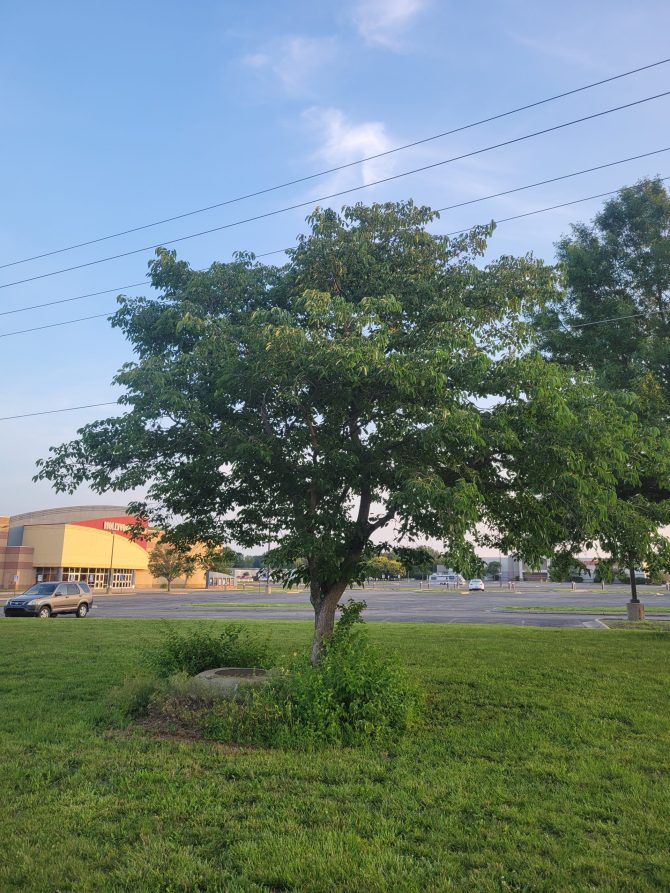
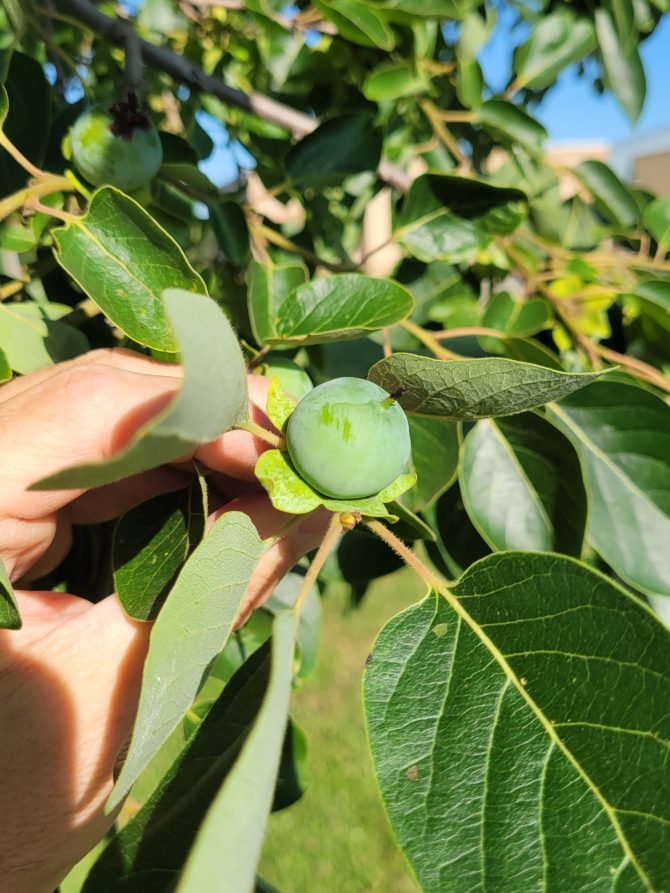
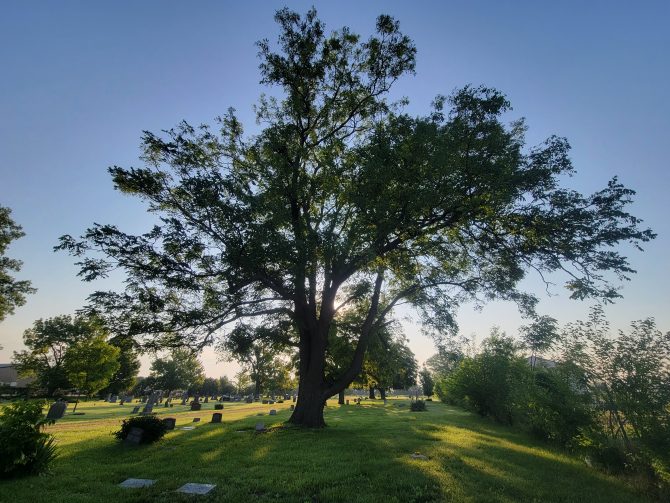
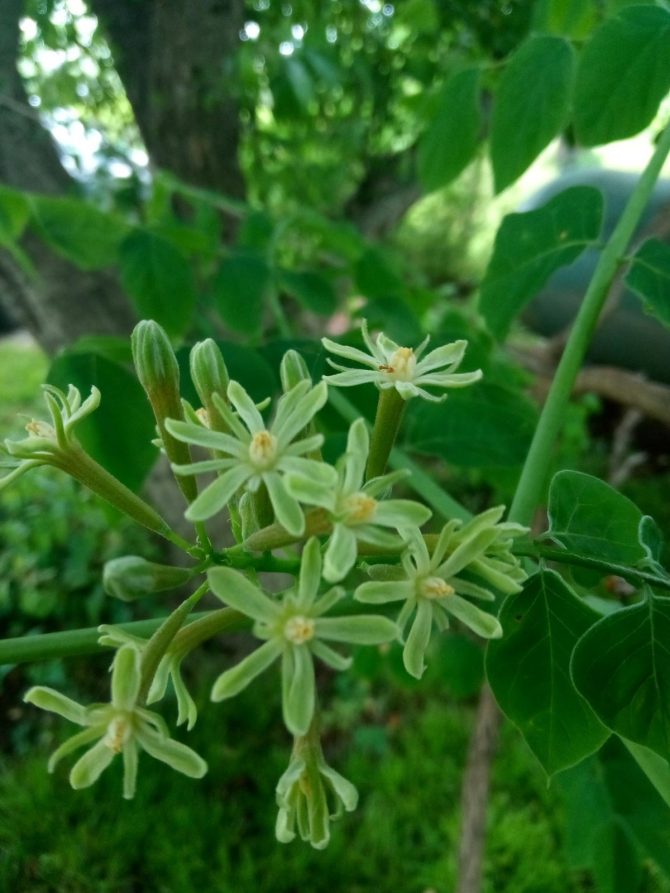
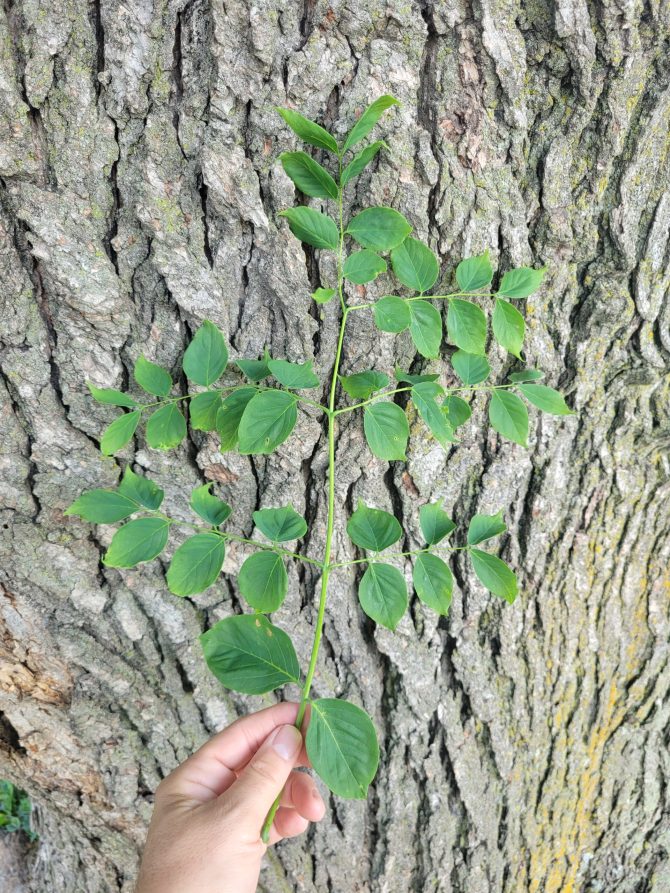
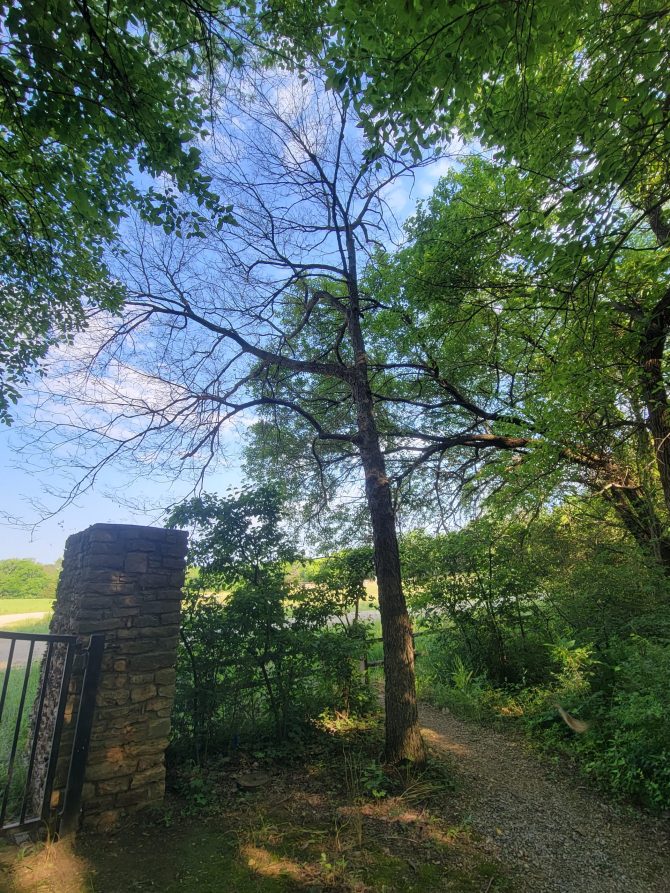
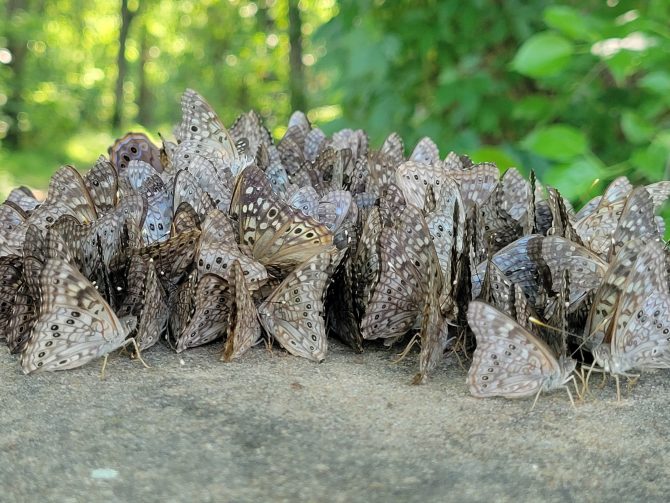
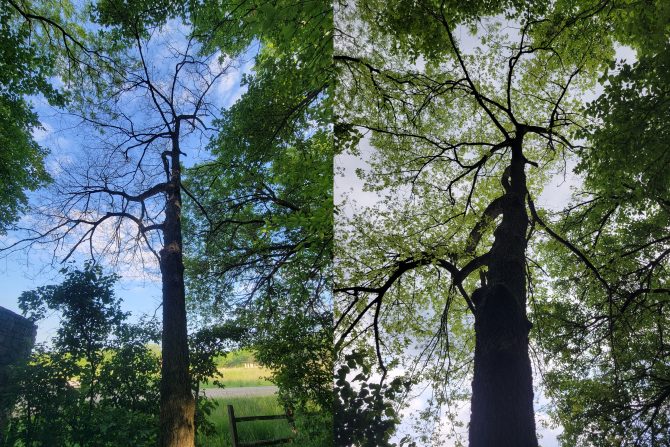

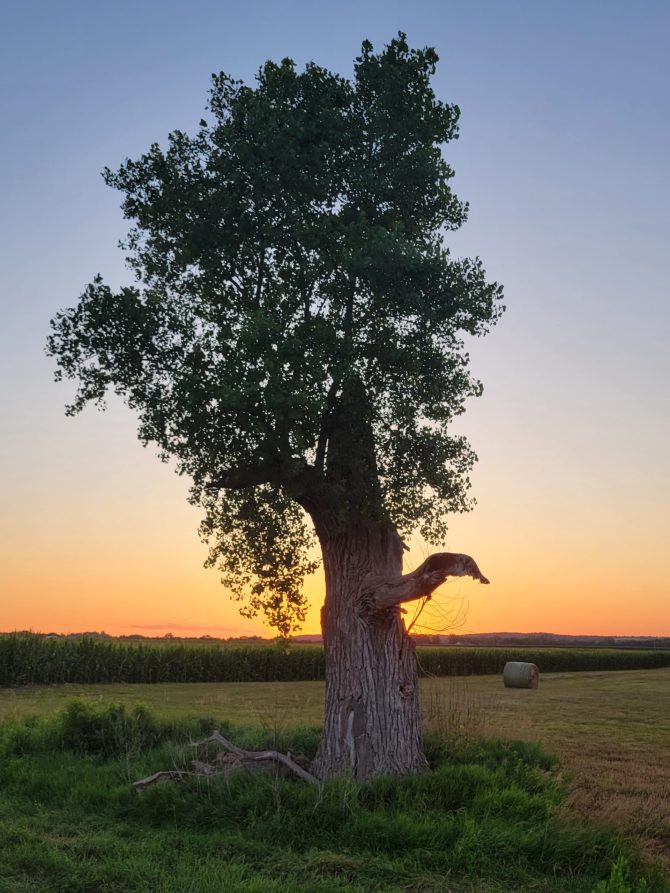

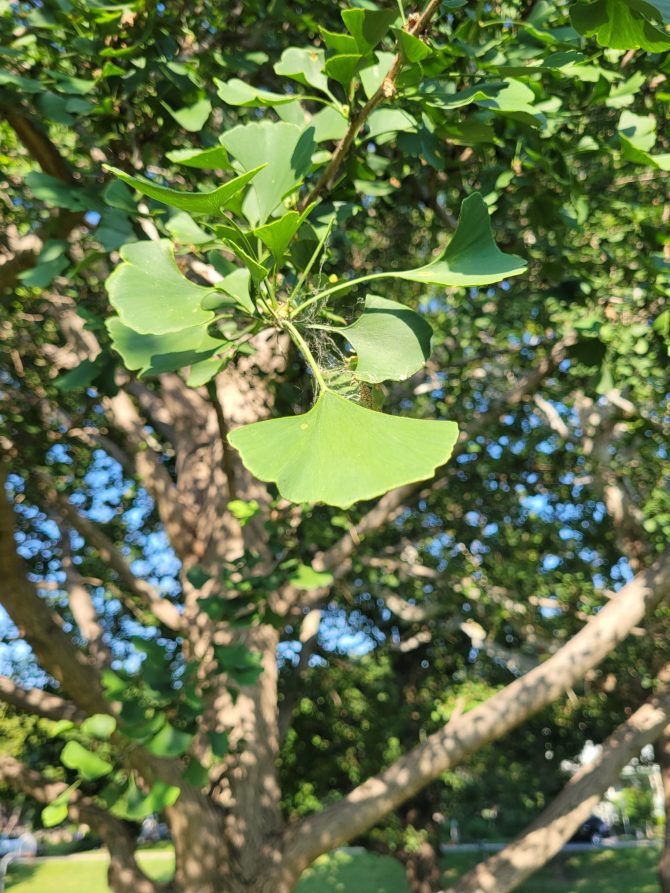

Add a comment to: Even More Interesting Trees